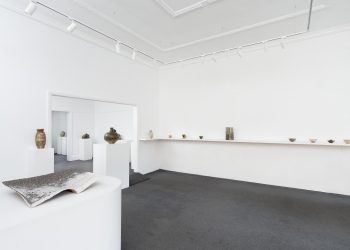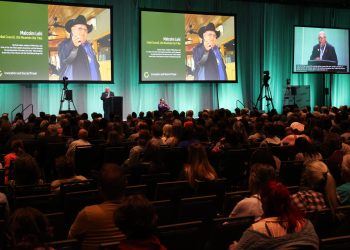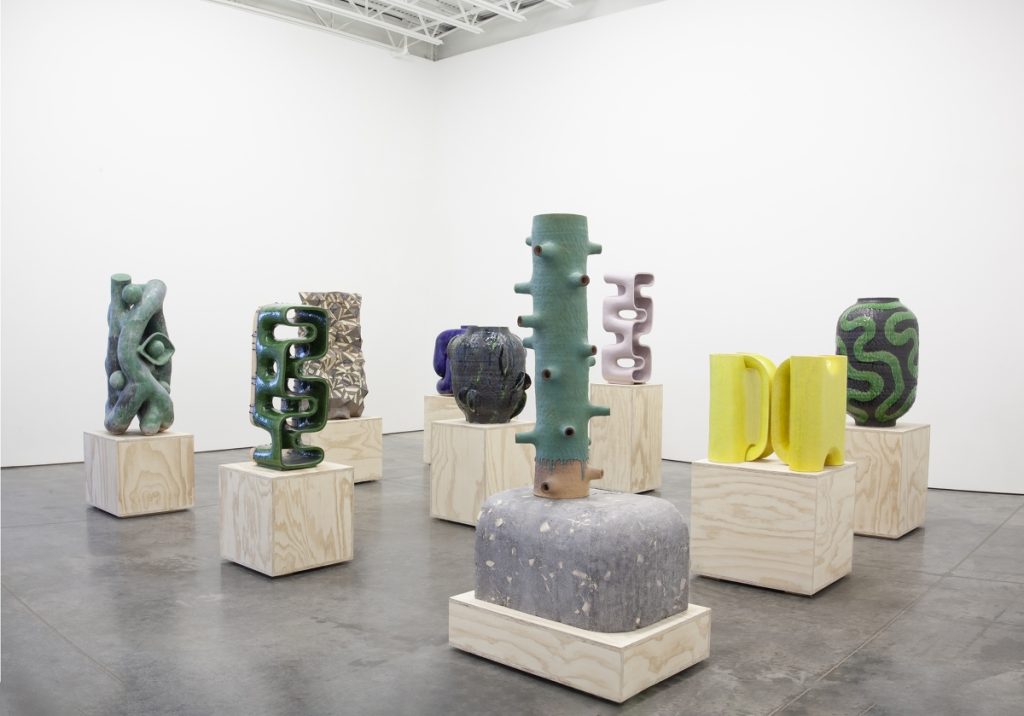
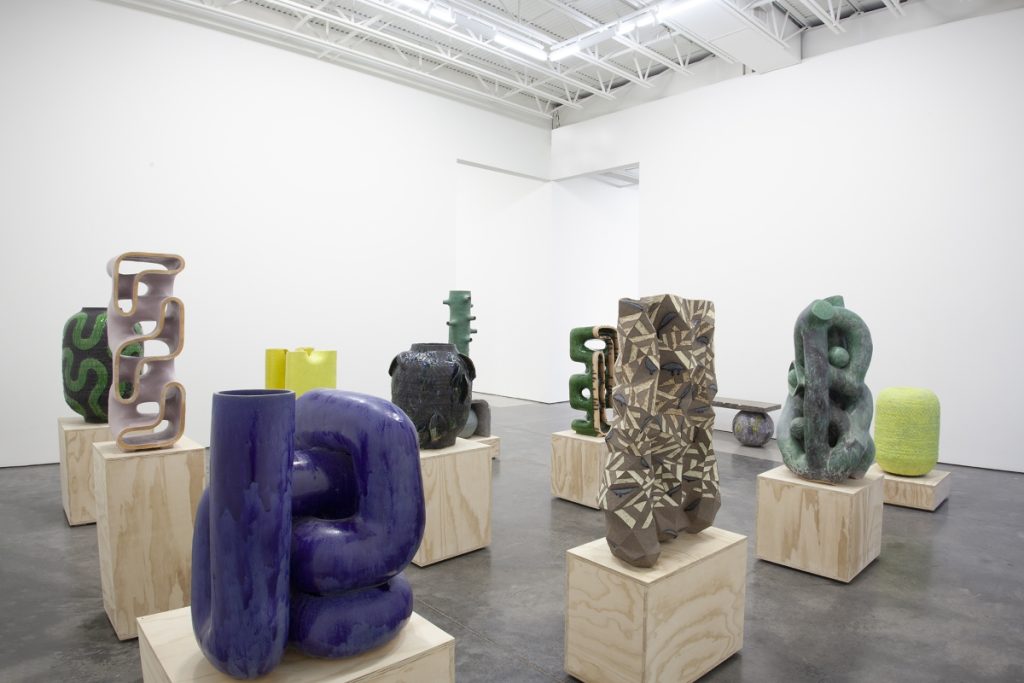
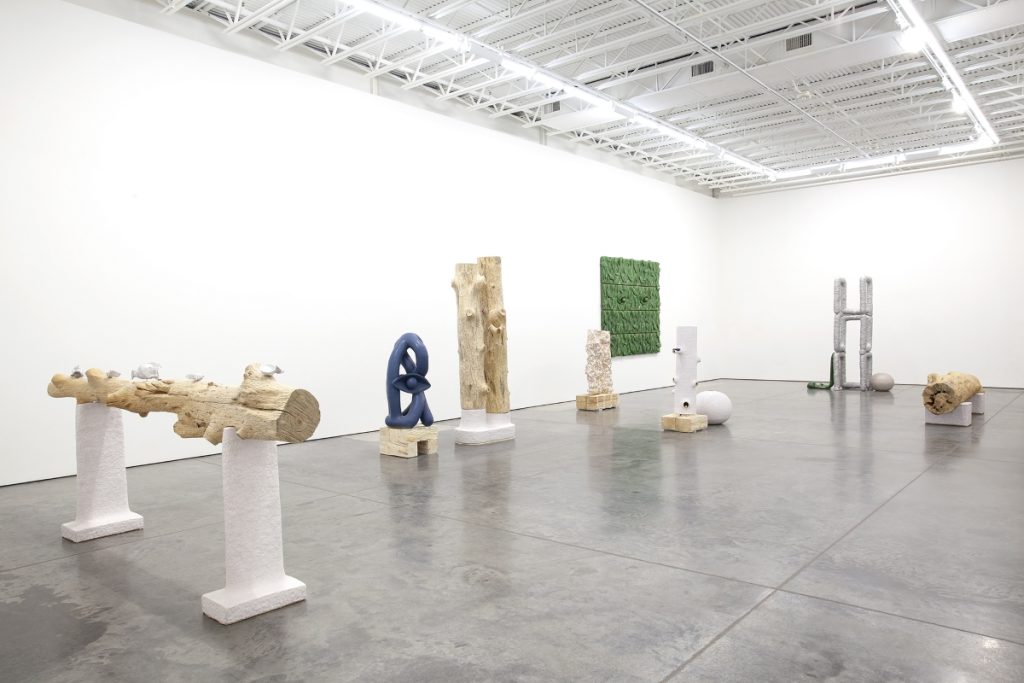
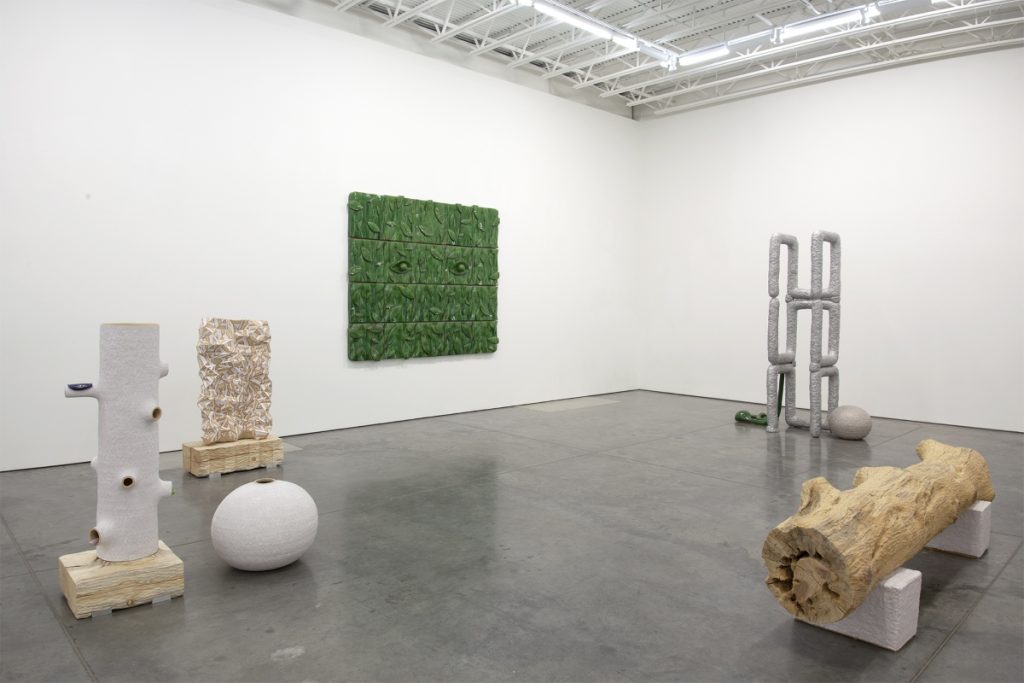
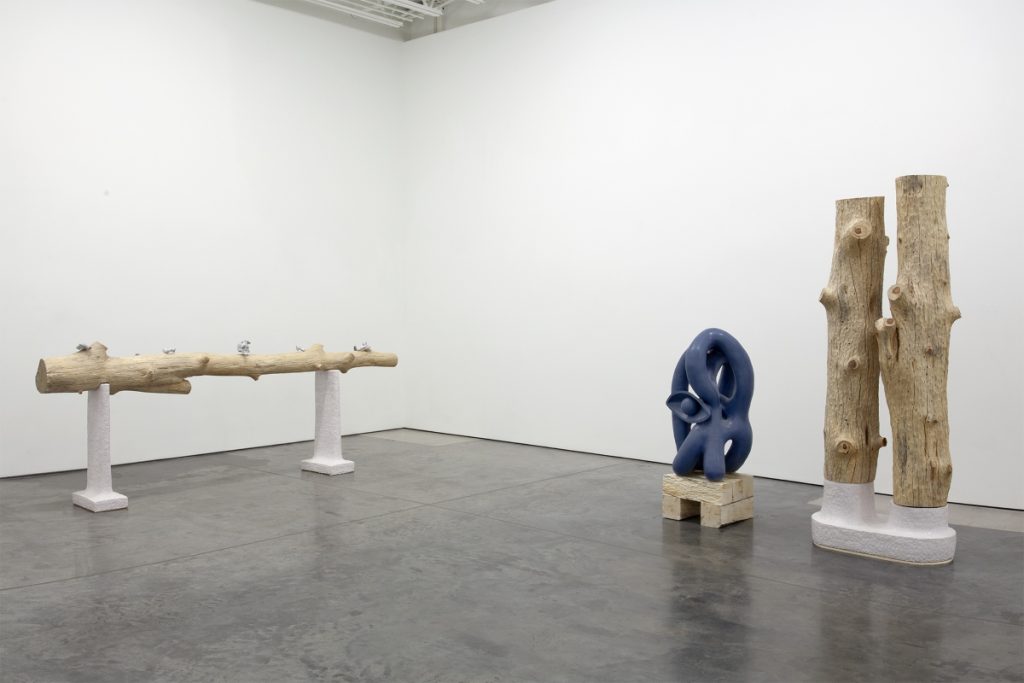
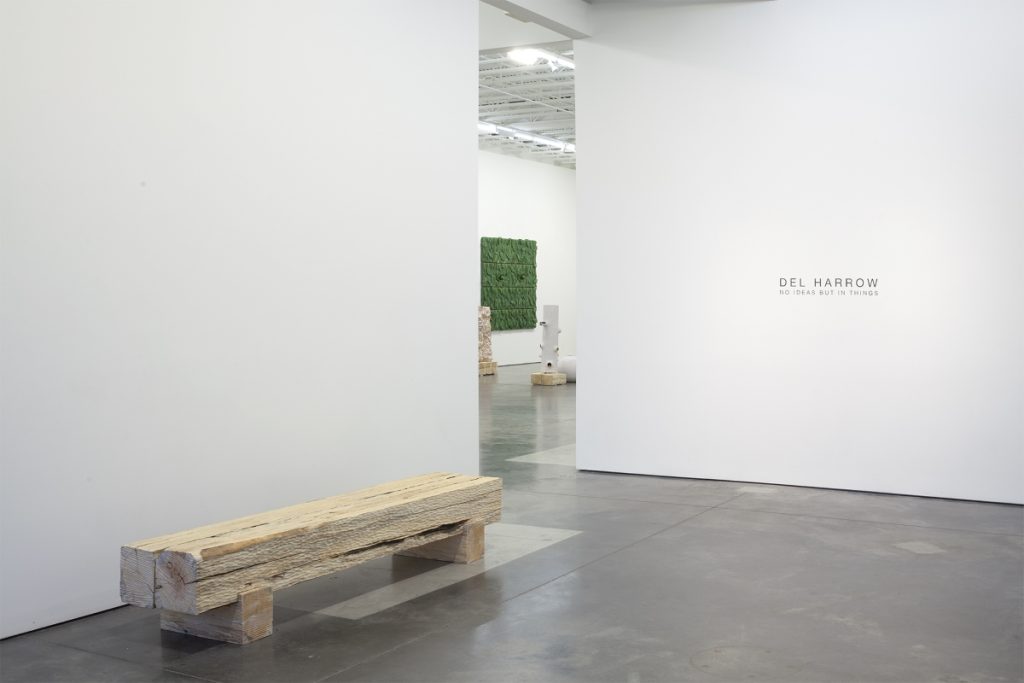
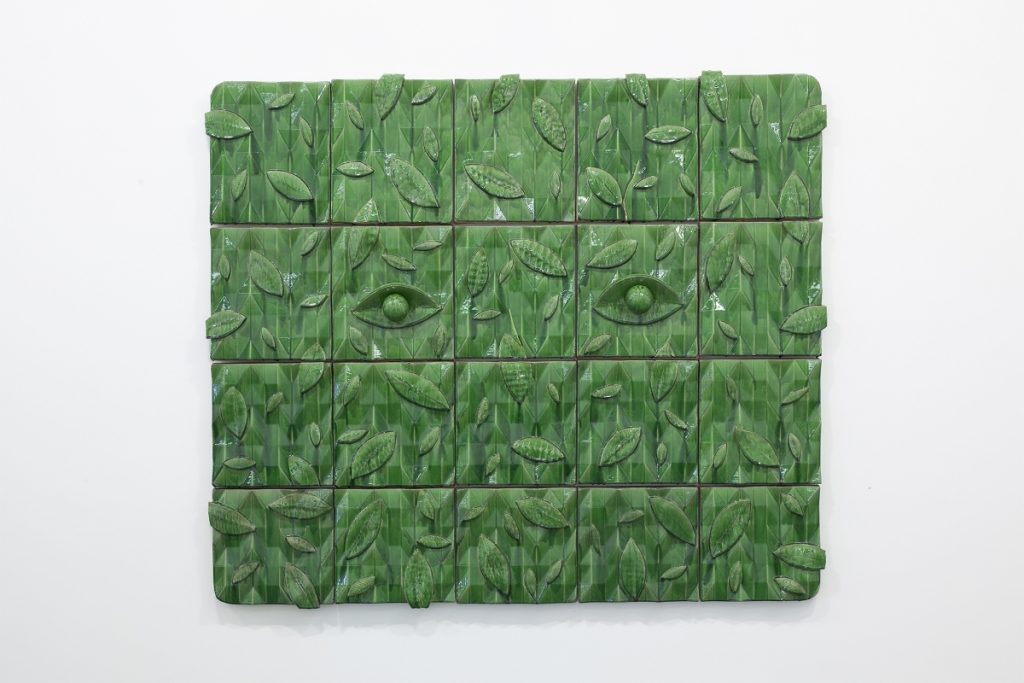
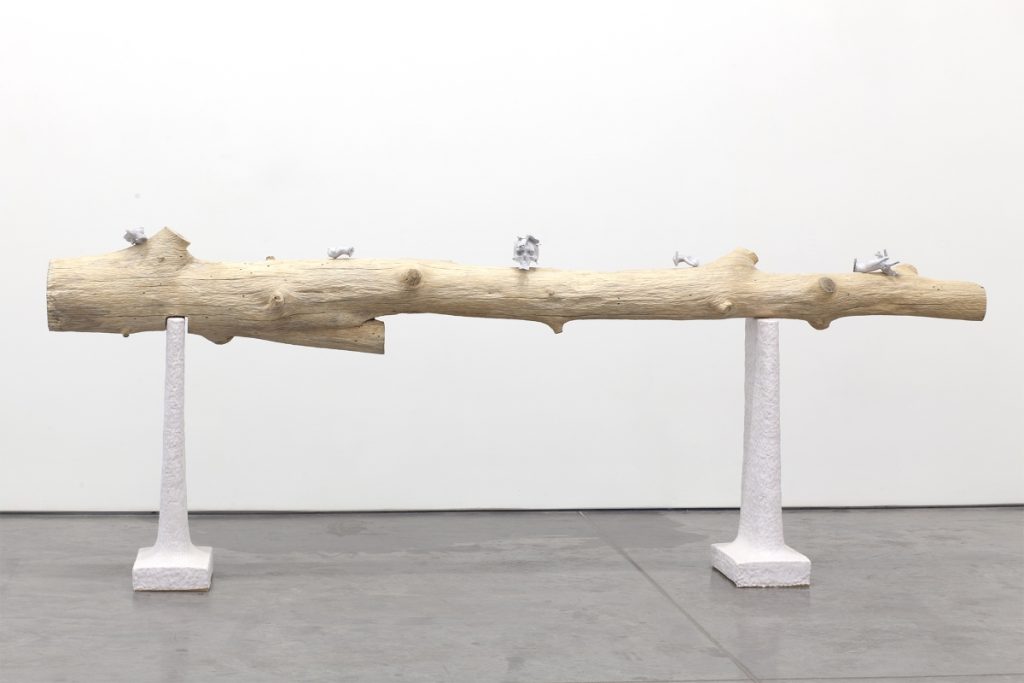
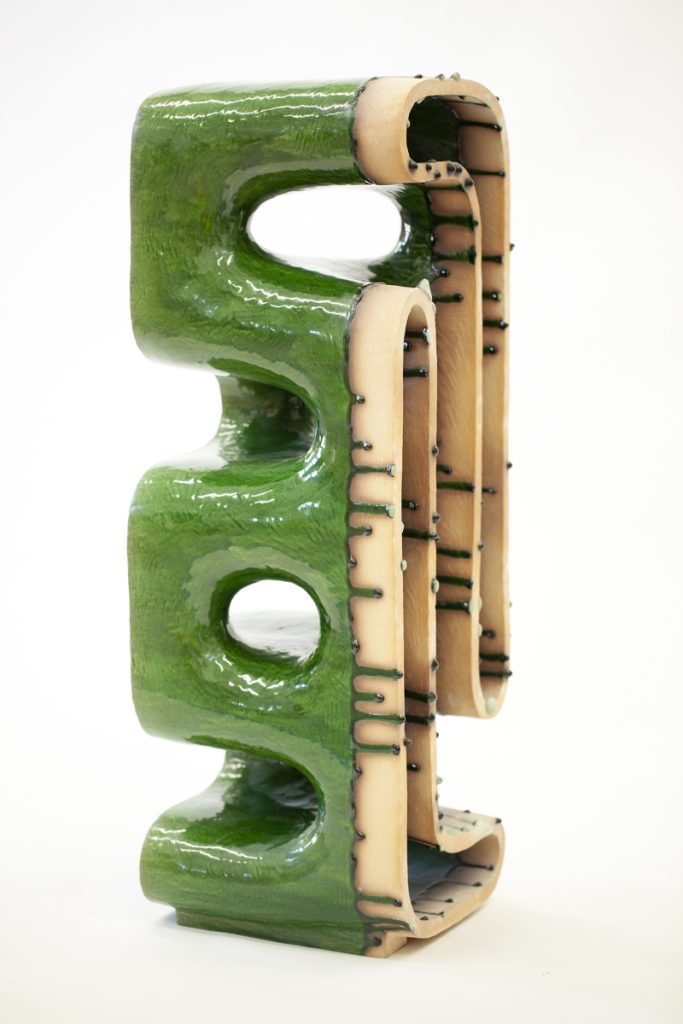
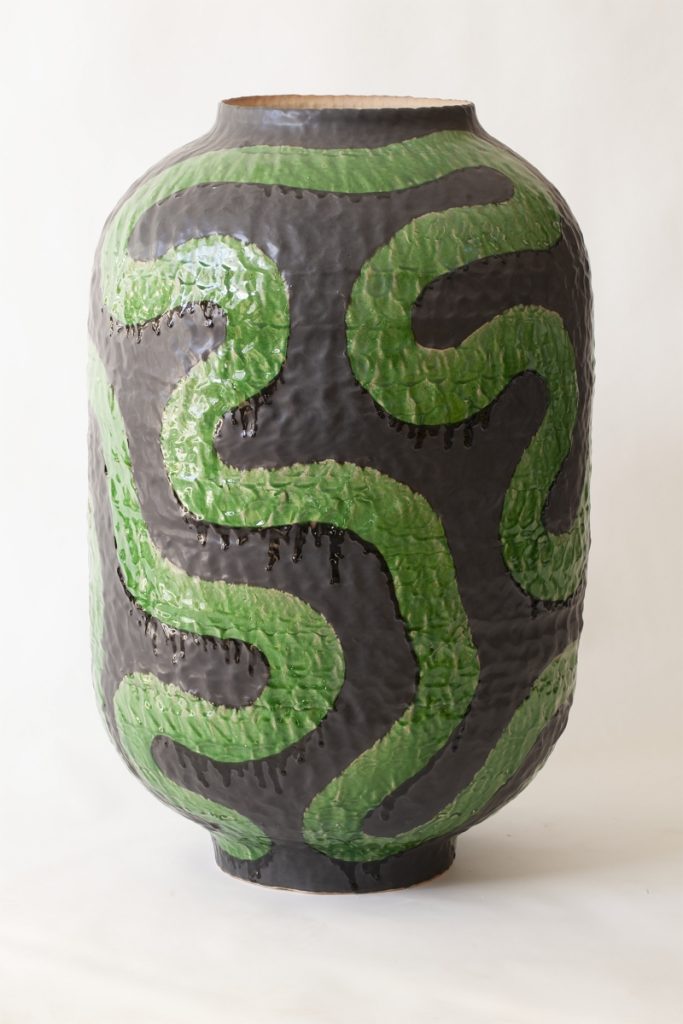
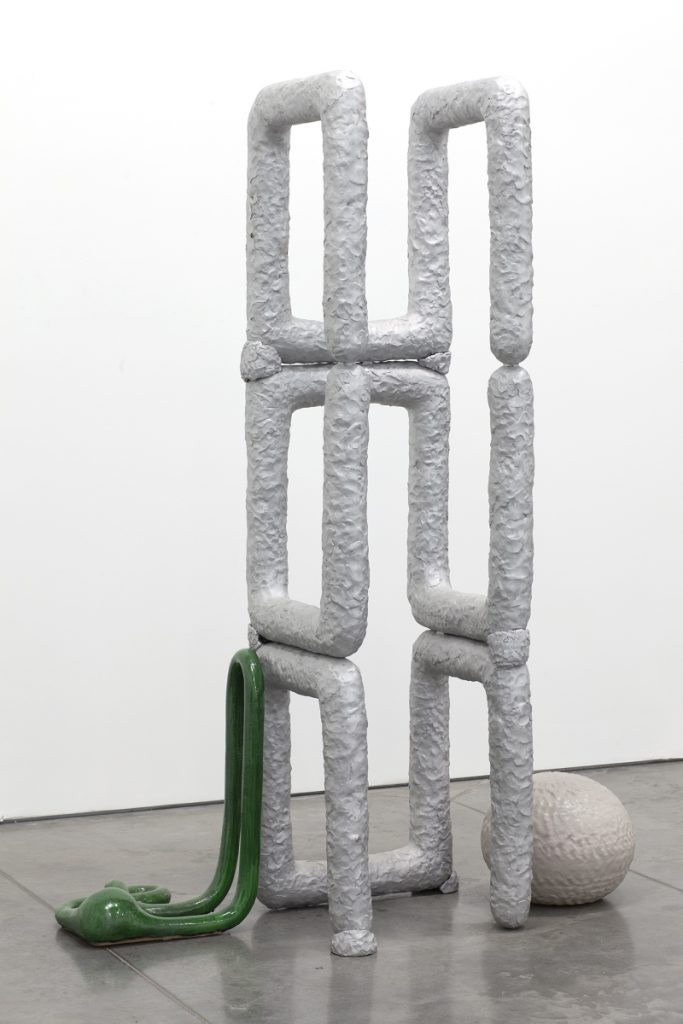
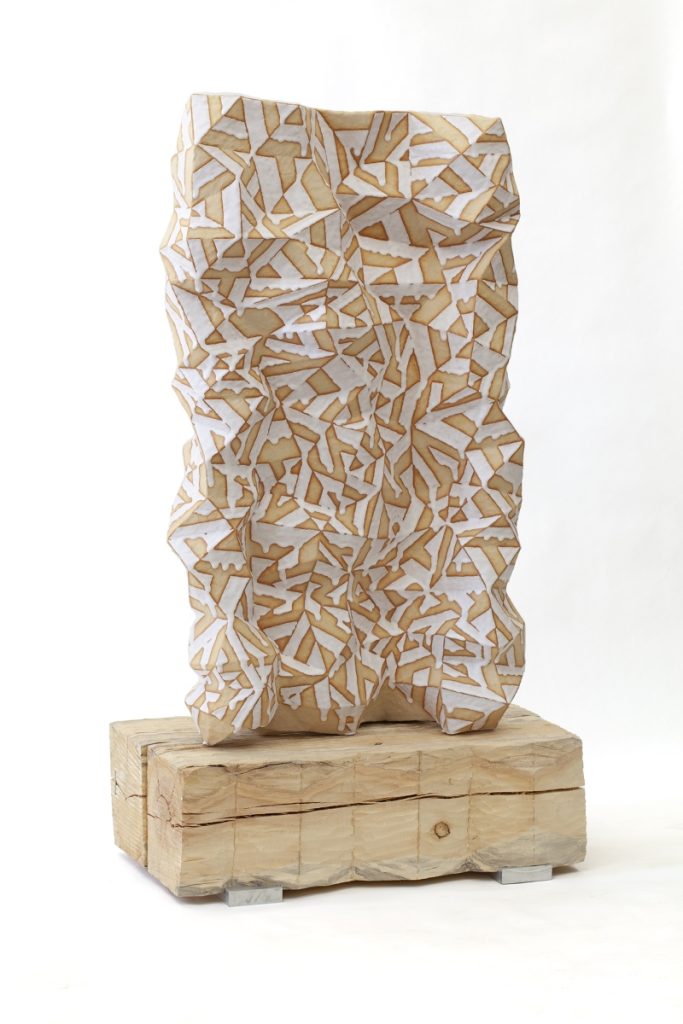
Del Harrow: No Ideas but in Things is on view at Haw Contemporary, Kansas City
November 3 – December 9, 2023
Haw Contemporary is pleased to announce a solo exhibition from Colorado-based artist Del Harrow. Entitled No Ideas but in Things, this expansive show opens tonight, and will cover the entire first floor of the gallery.
No Ideas but in Things
I began working with clay almost 30 years ago, in a high school ceramics class. Since that time I have been more or less continuously engaged with the problems of making forms with clay. I’ve learned from many teachers but my work does not come from any one particular tradition. I hand-build large vessel forms using a process that has evolved by watching and learning from many makers and years of trial and error. Sometimes I combine computer controlled machining with traditional forming process – a digital analog hybrid.
While most of my work has been in clay I also work with other materials. In this collection, along with clay there is work made from wood (pine), metal (aluminum), and concrete. Each material has its own character and language, its own sense of time. Because I have worked mostly in clay, the work has been made primarily through additive processes. Recently I’ve been working reductively with wood, a different way of coming to form. Squaring beams with a primitive chainsaw mill or removing the rot from a termite eaten pine log is a combination of rationalizing and excavating an organic mass. Cast aluminum has another language, of heat and fluidity – the mutability of the material and its endless capacity to be recycled and take on new form. Concrete is geology made in the time of the Anthropocene. I often cast broken fragments of old ceramic objects into the concrete, creating new mineral aggregates.
This collection of work was made slowly over the last three years and is organized here into three rooms. In the first room is a group of objects, arranged onto two shelves – a kind of curio cabinet. These objects are fragments – bits of debris generated in the processes of making the things in the other two rooms. Along with the cabinets this first room contains a long bench. The bench was made from wood collected in forests in the Rocky mountains of Colorado burned by wild fires, about an hours drive my studio. Each of the rooms has a bench – a place to sit, if you would like to.
The second room holds a group of nine large ceramic sculptures and vessels arranged in a grid on raw plywood plinths. Each is about the size of the interior of my kiln. This collection is deeply informed by the long tradition of modernist “art potters” – Bernard Palissy, Axel Saalto, Shoji Kamoda, Ruth Duckworth, Magdalene Odundo. They are inspired by intuitive and formal throughs: thoughts about containers and grids, old ceramic vessels used for storing food, fermenting grain, or burying the dead, the shapes of plants and trees, the confounding handle of yellow cup designed by the modernists Massimo and Leila Vignelli, the textures, the colors and forms in Hiyao Miyazaki animations.
In the third room a group of objects, sculptures, and tiles are organized around the carved sections of old pine tree This tree, already decayed by termites and rot, was cut from the empty lot where I built my studio. Along with ceramics and wood this room holds objects cast from scrap aluminum, collected and then melted down in a small furnace in the studio. Among these cast aluminum objects are small hands, sampled and 3D printed from digital archives, fragments scanned from Greek and Roman Statues of ancient gods.
There are many ways to make art. One can start with an idea or a subject, but the subject can also be the material itself; a series of questions, unfolding over time, about finding form through matter. The work is often repetitive and physical – carving wood with a chainsaw and then a chisel or building a ceramic vessel with large coils – and delicate and cerebral – arranging and re-arranging the parts of a composition. In this slow work thoughts are often fragmentary, repetitive, and bodily.
Working in this way involves patience and also risk. In one way or another the work needs to find its meaning. The process risks solipsism, navel gazing, mindless self-indulgence in the pleasure of shaping matter. But at best an order reveals itself, like the tending of a garden, as parts grow into a delicate whole, an ecology, a sense of meaning, not in ideas but in things.
Text by Del Harrow
Del Harrow lives and works in Fort Collins, CO with his wife, potter Sanam Emami and their son, William. He is an Associate Professor at Colorado State University where he teaches Sculpture, Digital Fabrication, and Ceramics. His art practice spans genre’s of sculpture and design, and integrates traditional manual and skill based forming processes with digital fabrication technology. Harrow has been invited to lecture widely on his own work and on the intersection of digital fabrication and craft in contemporary art and education. Recent lectures include Syracuse University/The Everson Museum of Art, The Auerbach Endowed Lecture Series at Hartford Art School, CT, and the Current Perspectives Lecture Series at Kansas City Art Institute. His work has been exhibited at The Milwaukee Art Museum, The Denver Art Museum, The Arizona State University Art Museum, Vox Populi Gallery, The Museum of Fine Art in Boston. In 2020 Harrow received a United States Artist Fellowship,“an awards celebrating artists and cultural practitioners who have significantly contributed to the creative landscape and arts ecosystem of the country.”
Contact
mail@hawcontemporary.com
Haw Contemporary
1600 Liberty St
Kansas City, MO 64102
United States





